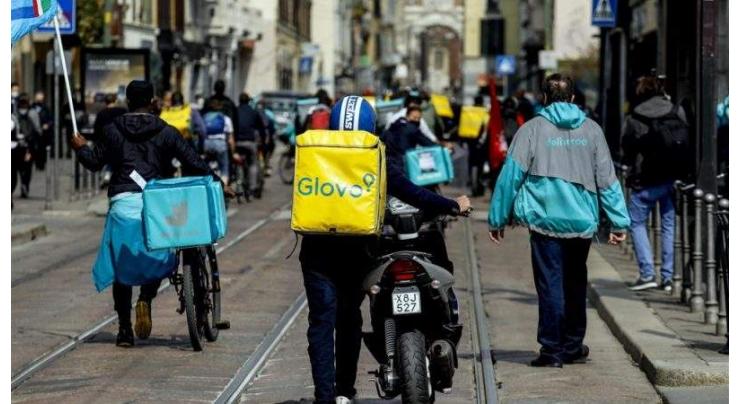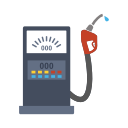
Latin American Cocaine Cartels Bring Violence To Europe
Faizan Hashmi Published January 16, 2023 | 05:17 PM

"Seventy euros for one, 120 for two," said the cocaine dealer as the young woman opened her door on Paris' chic Left Bank
Paris, (UrduPoint / Pakistan Point News - 16th Jan, 2023 ):"Seventy euros for one, 120 for two," said the cocaine dealer as the young woman opened her door on Paris' chic Left Bank.
"I'm like all the delivery riders speeding around Paris dropping off sushi and groceries," he smiled. "I get orders and I deliver them." Getting cocaine in many of Europe's big cities is now as easy as ordering a pizza.
Twenty or so minutes after you place your order by WhatsApp or Signal, a dealer can be at your door.
"Consumers prefer to go on a platform and have their drugs delivered by a guy who looks like a Deliveroo rider," said police commissioner Virginie Lahaye, the head of the Paris drugs squad. "It is much easier than having to go to some grim place in the suburbs." Some 3.5 million Europeans took cocaine in 2021, according to the European Monitoring Centre for Drugs and Drug Addiction (EMCDDA) -- four times more than 20 years ago.
The continent has been hit by a "tsunami" of cocaine, said the head of the Belgian federal police, Eric Snoeck, with 240 tonnes seized in 2021, according to Europol, nearly five times more than a decade ago.
Europe has become one of the most lucrative markets for the big drug cartels, who have not hesitated about using the corruption and extreme violence that has served them so well in South America.
"Kidnappings, torture and hits: there is so much money at stake that the criminal organisations have brought the cartels' methods to our shores," said Stephanie Cherbonnier of the French anti-drug office.
Northern Europe's big ports like Antwerp and Rotterdam have been so riven by drug violence that democracy itself has been threatened, with gangs even daring to plot to kidnap Belgium's justice minister.
With gun battles in the streets of Antwerp, the country could soon "be regarded as a narco state" warned Brussels' chief prosecutor Johan Delmulle.
The cocaine flooding Europe begins its journey in the high mountain plateaus of Bolivia, Colombia and Peru, where the coca leaves from which the drug is extracted are grown.
In Catatumbo in northeast Colombia, Jose del Carmen Abril relies on coca to feed his eight children.
"Coca... has replaced the government which was never very present here," said the 53-year-old. "It has helped us build schools, health centres, roads and houses." In a country where many earn no more than $7 (6.5 euros) a day, a coca grower can earn five times that.
But Del Carmen Abril chafes at being called a "narco", saying farmers like him "don't even make the minimum wage".
Despite the billions spent over the decades by Washington and Bogota in their "war on drugs", peasants continue to grow more and more coca, with harvests up 14 percent in 2021 to an all-time high of 1,400 tonnes, according to the United Nations.
"Chemists" mix the chopped leaves with petrol, lime, cement and ammonium sulphate to make a white paste that is then turned into powder in the drug laboratories.
In Catatumbo the paste sells for $370 a kilo. Once mixed with a cocktail of acids and solvents it becomes "coke", worth more than $1,000 a kilo.
Colombia supplies two-thirds of the world's cocaine. But the fall of the Cali and Medellin cartels in the 1990s, and the peace deal signed in 2016 with the Marxist FARC guerrillas, turned the trade upside down.
Once mere middlemen, the Mexican cartels have since taken almost total control of the market, from financing production to supervising cocaine smuggling.
The Sinaloa and Jalisco cartels at first concentrated on their "natural" market, the United States, before switching their focus to Europe, where cocaine consumption has exploded.
Europol estimates that Europe's cocaine market is now worth between 7.6 and 10.5 billion euros at street level.
"The US market is saturated and coke sells in Europe at prices 50 to 100 percent higher," said the head of French customs' intelligence unit, Florian Colas. "Another advantage for the traffickers is the less dissuasive prison sentences and the multiple logistic options." Most of the cocaine that crosses the Atlantic is carried in containers, hidden in perfectly legal shipments of bananas, sugar or tinned food.
The rest comes in by air hidden in suitcases or in the stomachs of drug "mules". Some even comes by sea in remote-controlled submersibles, like the ones seized by Spanish police in July.
The Mexican cartels established their European bridgehead on Spain's Costa del Sol in the early 2000s, which was already the main hub for the transport of Moroccan cannabis.
But the arrest of several major smugglers and above all the explosion in maritime traffic, persuaded them to redirect smuggling through northern Europe's giant container ports like Antwerp, Hamburg, Le Havre and Rotterdam.
"Some cargos go through Caribbean ports" on their way from South America, while others "pass via the Balkans or West Africa before entering Europe," said Corinne Cleostrate, deputy head of French customs.
Related Topics
Recent Stories

Currency Rate In Pakistan - Dollar, Euro, Pound, Riyal Rates On 26 April 2024

Today Gold Rate in Pakistan 26 April 2024

ICC Womens T20 World Cup Qualifier, Match 2: Ireland Women open with Comfortable ..

Robinson, bowlers help New Zealand go 2-1 up against Pakistan

Shahzeb Chachar to hold khuli kachehri on April 26

Heatwave amid Israel's aggression in Gaza brings new misery, disease risk

Tourism must change, mayor says as Venice launches entry fee

Court adjourns Judicial Complex attack case till May 17

Nasreen Noori’s book ‘Popatan Jahra Khwab’ launched

Wafaqi Mohtasib inspection team visits Excise and taxation office

AJLAC announces 5th Conference titled ‘People’s Mandate: Safeguarding Civil ..

Pak-US officials engage to enhance trade, investment ties
More Stories From Business
-
Exchange rates for currency notes
20 minutes ago -
Foreign exchange rates
50 minutes ago -

Currency Rate In Pakistan - Dollar, Euro, Pound, Riyal Rates On 26 April 2024
1 hour ago -

Today Gold Rate in Pakistan 26 April 2024
2 hours ago -
Chinese minister felicitates Ahsan Iqbal on reappointment as Planning minister
11 hours ago -

Pak-US officials engage to enhance trade, investment ties
12 hours ago
-

Stocks fall as tech shares sink, US economy slows
12 hours ago -

Higher taxes, awareness help decrease cigarettes sale in Pakistan
13 hours ago -

Ahsan Iqbal chairs CPEC JWGs, 13th JCC review-meeting
13 hours ago -

Industries Minister recommends urea fertilizer import to stabilize prices and supply
13 hours ago -

Honda announces US$11 bn EV battery and vehicle plant in Canada
13 hours ago -

Zhao Shirin calls on Punjab Industries Minister
14 hours ago














